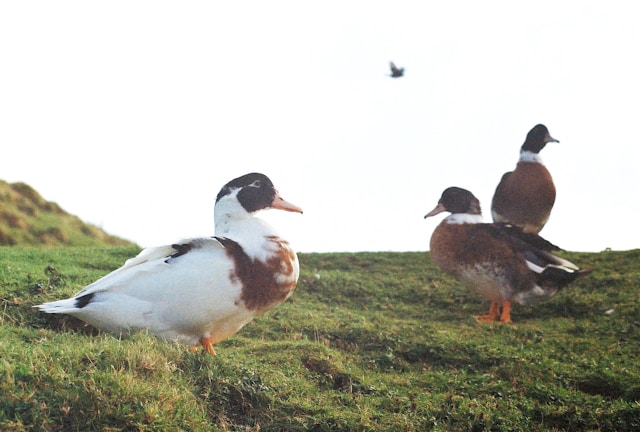Birdwatching, or birding, is a rewarding hobby that allows you to connect with nature and discover the incredible diversity of avian life around you. In New Zealand, a country famed for its unique and endemic bird species, birdwatching offers an unparalleled experience for both beginners and seasoned enthusiasts. This guide will walk you through the basics of birdwatching in New Zealand, including essential tips, recommended gear, and the best locations to start your birding adventure.
Why Birdwatching in New Zealand?
New Zealand’s long isolation from other landmasses has resulted in a distinct and diverse bird population, including many species that are not found anywhere else in the world. From the nocturnal kiwi to the alpine kea, New Zealand’s birds are as varied as the landscapes they inhabit. Birdwatching in New Zealand provides an opportunity to see these unique creatures in their natural habitats and to contribute to the conservation of these species by fostering a deeper appreciation for their existence.
Getting Started: Essential Tips for Beginner Birdwatchers
- Learn the Basics: Understanding the basics of birdwatching is crucial. Start by familiarizing yourself with common bird species in New Zealand. Field guides, birdwatching apps, and online resources can be immensely helpful. Websites like the New Zealand Birds Online provide extensive information on bird species, including their habits, calls, and habitats;
- Invest in Good Binoculars: A good pair of binoculars is an essential tool for birdwatching. Look for binoculars that offer a clear and bright image, with a magnification of around 8×42 or 10×42 being ideal for most birdwatching scenarios. High-quality binoculars can make a significant difference in your ability to spot and identify birds;
- Join a Birdwatching Group: Joining a local birdwatching group or club can provide invaluable learning opportunities. Experienced birders can offer advice, share tips, and help you develop your skills. In New Zealand, organizations like Birds New Zealand (Ornithological Society of New Zealand) offer memberships, field trips, and events that can enrich your birdwatching experience;
- Respect Wildlife and Habitats: Always remember to respect the birds and their habitats. Avoid disturbing nests or getting too close to birds, especially during breeding seasons. Stay on designated paths and trails to minimize your impact on the environment.
Essential Gear for Birdwatching
- Binoculars: As mentioned, a good pair of binoculars is crucial. Brands like Nikon, Bushnell, and Vortex offer reliable models that cater to various budgets;
- Field Guide: A field guide specific to New Zealand birds can help you quickly identify species. Books like “The Field Guide to the Birds of New Zealand” by Hugh Robertson and Barrie Heather are excellent resources;
- Notebook and Pen: Keeping a birdwatching journal allows you to record your sightings, note behaviors, and track your progress over time;
- Camera: For those interested in bird photography, a camera with a good zoom lens can capture stunning images of your sightings;
- Appropriate Clothing: Wear comfortable, weather-appropriate clothing. Layers are ideal, as they allow you to adjust to changing weather conditions. Sturdy walking shoes are a must for navigating various terrains.
Best Birdwatching Spots in New Zealand
- Cape Kidnappers, Hawke’s Bay: Home to the largest mainland gannet colony in the world, Cape Kidnappers offers stunning views of these seabirds. The breeding season from November to February is the best time to visit;
- Tiritiri Matangi Island, Auckland: This open sanctuary is a haven for many rare and endangered bird species, including the takahe, saddleback, and little spotted kiwi. The island’s well-maintained trails and informative guides make it an excellent spot for beginners;
- Otago Peninsula, Dunedin: Known for its royal albatross colony at Taiaroa Head, the Otago Peninsula is also home to yellow-eyed penguins, blue penguins, and various seabirds. Guided tours are available for a more immersive experience;
- Okarito Lagoon, West Coast: The largest unmodified wetland in New Zealand, Okarito Lagoon is a prime location for spotting the rare kotuku (white heron) and other waterbirds. Kayaking tours offer a unique way to explore the lagoon and observe the birdlife up close;
- Fiordland National Park, South Island: This expansive park offers diverse habitats, from rainforests to alpine regions. Birdwatchers can spot a variety of species, including the kea, kaka, and the elusive rock wren;
- Kapiti Island, Wellington: A predator-free island sanctuary, Kapiti Island is a refuge for many of New Zealand’s rarest birds. The island’s accessible walking tracks provide ample opportunities for birdwatching, with species like the kokako and stitchbird frequently seen.
Conclusion
Birdwatching in New Zealand is a captivating and fulfilling hobby that offers the chance to connect with the country’s unique natural heritage. By starting with the right knowledge, gear, and respect for the environment, beginners can enjoy countless hours of discovery and wonder. Whether you’re exploring local parks or embarking on trips to renowned birding hotspots, New Zealand’s rich avian life promises to inspire and delight birdwatchers of all levels. So grab your binoculars, head outdoors, and begin your journey into the fascinating world of New Zealand’s birds!
